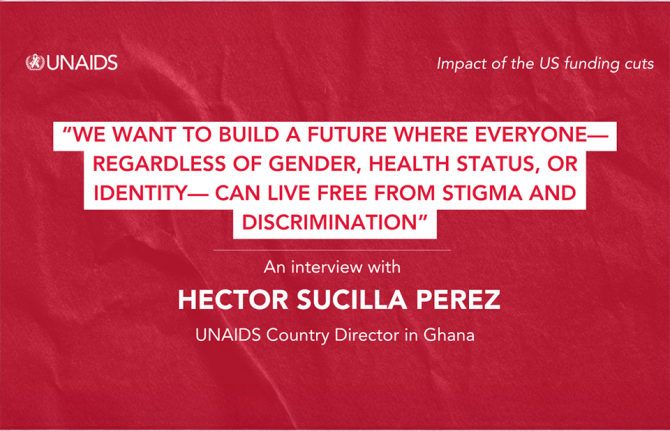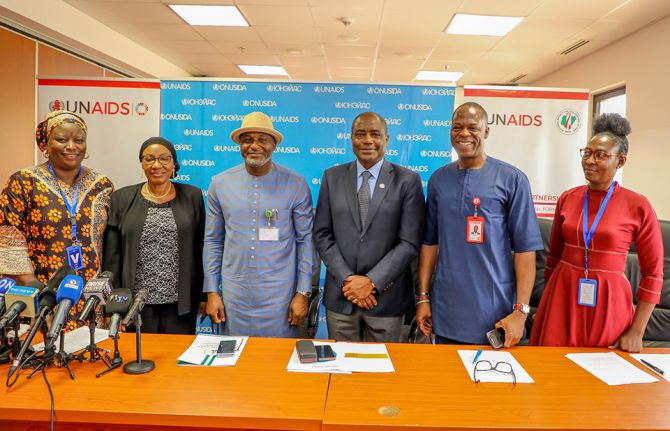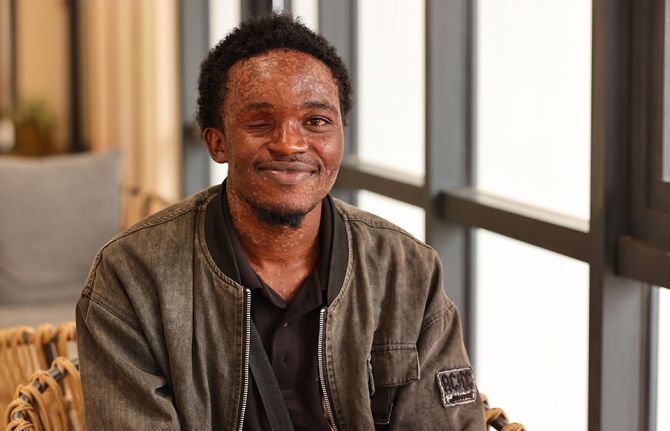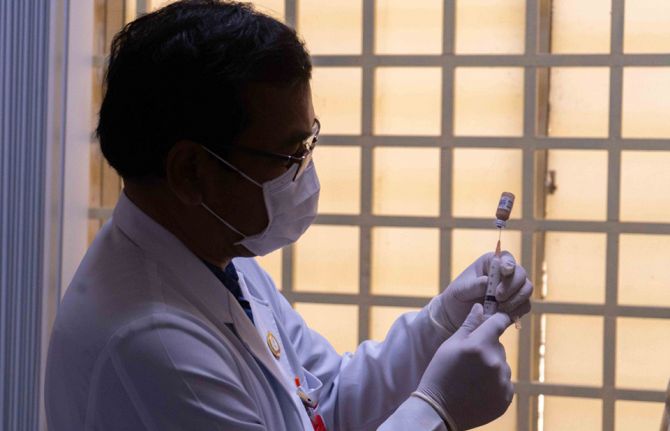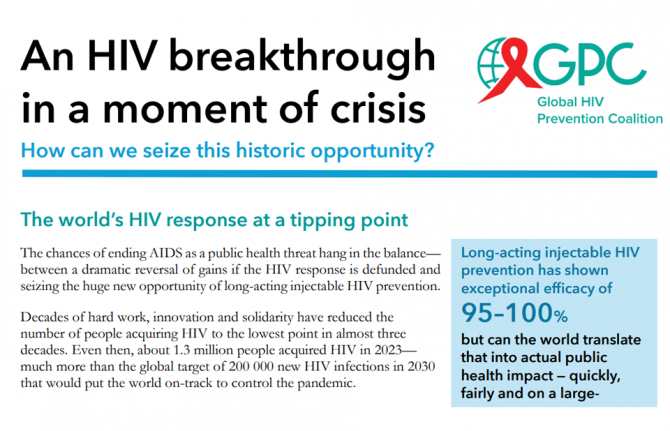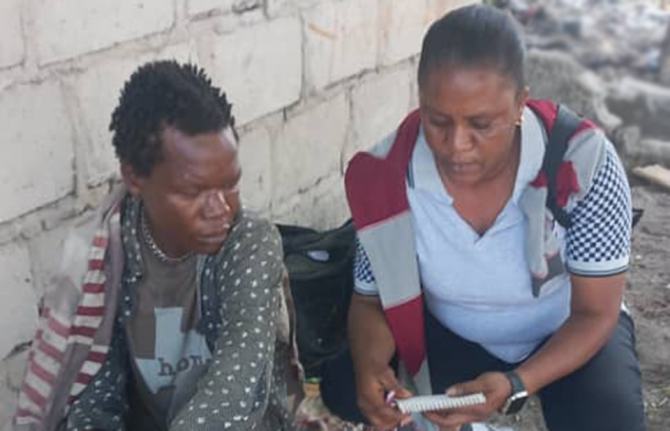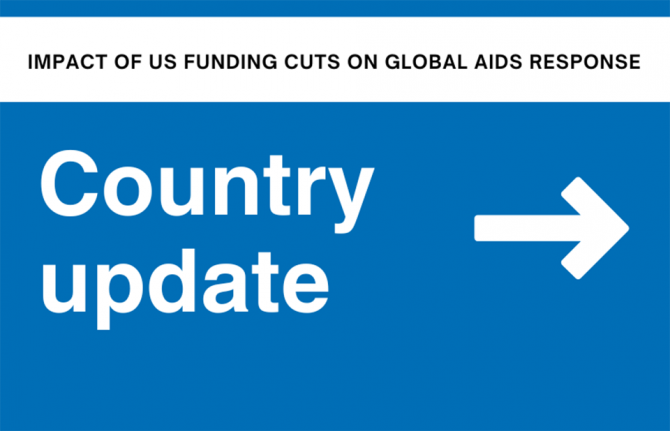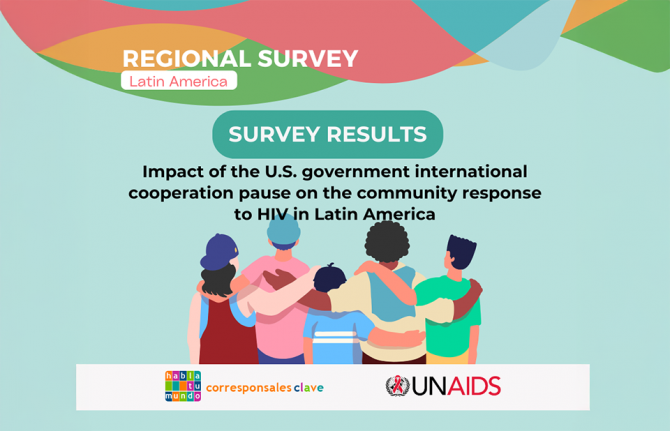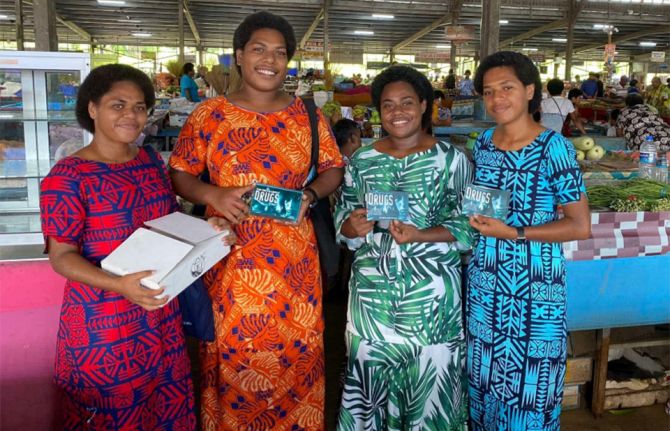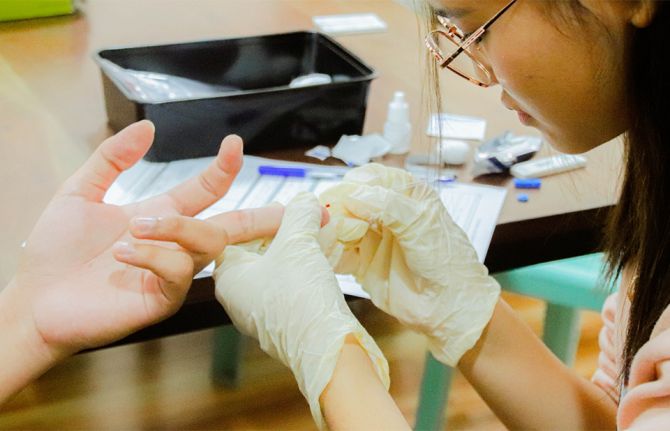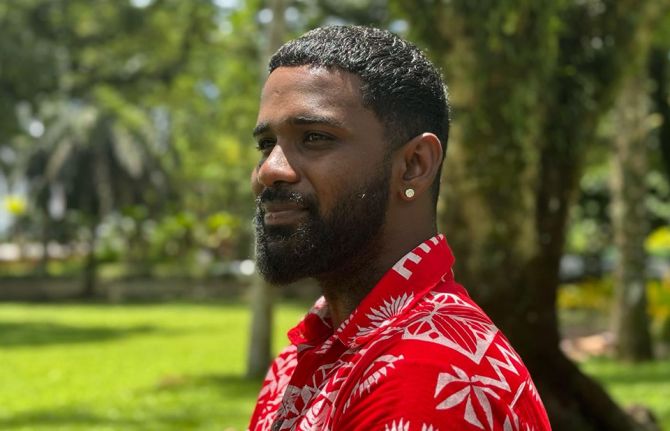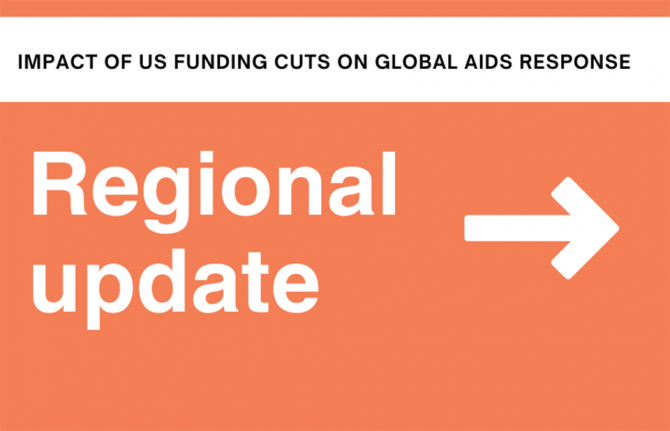
Feature Story
African First Ladies determined to speed up AIDS response
04 July 2007
04 July 2007 04 July 2007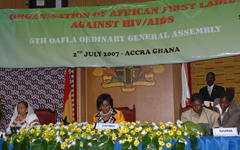
L to R: Mrs Azeb Mesfin, First Lady of Ethiopia, Mrs
Maurine Mwanawasa, Fist lady of Zambia and Mrs
Theresah Kufuor, First lady of Ghana chairing the
fifth General Assembly of OAFLA.
Representatives from more than 20 countries gathered in Accra, Ghana on the occasion of the 5th General Assembly of the Organization of African First Ladies Against AIDS (OAFLA) held on the margins of the 9th Ordinary Session of the Assembly of the African Union.
During her opening speech, the First Lady of Ghana, Mrs. Theresa Kufuor, urged her counterparts and colleagues on the continent to increase their commitment to assist their various governments in responding to AIDS, working towards ambitious national targets on HIV prevention, treatment, care and support.
“Let us be more conscious of the negative impact of AIDS on our people and let us increase our desire to make a difference,” she said. “ Africa bears the brunt of the pandemic, with women and girls at a greater risk as a result of their socio cultural subordination,” she added.
Mrs. Kufuor stressed that women and girls are at heightened risk of HIV infection as a result of their economic, and socio-cultural situation and that sexual assault and violence against women and girls also heightens their vulnerability to HIV.
Added to that, she said, is the fact that a large section of the population still does not believe they are at risk of infection while in most African countries stigma and discrimination against people living with HIV discourage many people from undergoing voluntary tests and disclosing their status to sexual partners.
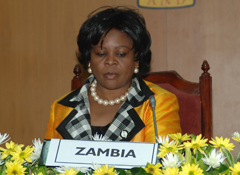
The First Lady of Zambia and OAFLA President
Maureen Mwanawasa said the gathering should
prompt the First Ladies to reflect on the enormity
of the tasks and challenges posed by AIDS.
For her part, First Lady of Zambia and OAFLA President Maureen Mwanawasa said the gathering should prompt the First Ladies to reflect on the enormity of the tasks and challenges posed by AIDS. “As mothers, we cannot afford to stand by and watch AIDS redefine the meaning of childhood for millions of our children. It is important that we embrace interventions that will promote the birth of an AIDS-free generation,” she said .
According to Mrs. Mwanawasa, even though most governments have implemented a number of Prevention of Mother-to-child Transmission (PMTCT) HIV programmes, there are still many gaps in delivery systems, including inadequate training for health staff, unsustainable support programmes, lack of effective monitoring and evaluation programmes, week referral systems between health centres and the community, insufficient community involvement and limited income generating activities for those affected by AIDS.
In her presentation of the recent key achievements of OAFLA, President Mwanawasa noted the development of an action plan from 2006 to 2008, with focus on PMTCT, the production of financial procedures manual to guide and regulate OAFLA’s expenditures as well as the mobilization of equipment and financial resources to strengthen its regional offices and executive secretariat.
She also pointed out the strengthening of partnerships with a number of organizations, including UNAIDS and PEPFAR.

The United Nations System commended the First
Ladies for their unwavering support and advocacy
which have been instrumental in Africa’s AIDS
response.
In his address at the opening ceremony, UNAIDS, Country Coordinator Dr Roger Salla Ntounga underlined the importance of “partnership for an expanded and effective response” and stressed the need to address the fundamental drivers of the epidemic, especially gender inequality and the low status of women.
The United Nations System represented by Mrs Oby Ezekwesili, Vice President Africa Region at the World Bank, Dr Roger Salla Ntounga of UNAIDS and Dr.Lalla Toure of UNICEF commended the First Ladies for their unwavering support and advocacy which have been instrumental in Africa’s AIDS response. They reaffirmed the support of their organizations to OAFLA in line with the common objectives to move towards universal access to HIV prevention, treatment, care and support by 2010.
Mrs. Azeb Mesfin, First Lady of Ethiopia and Vice President of OAFLA has offered to host the next OAFLA meeting in her country, in September 2007, in the context of the upcoming Ethiopian Millennium Campaign.
Related
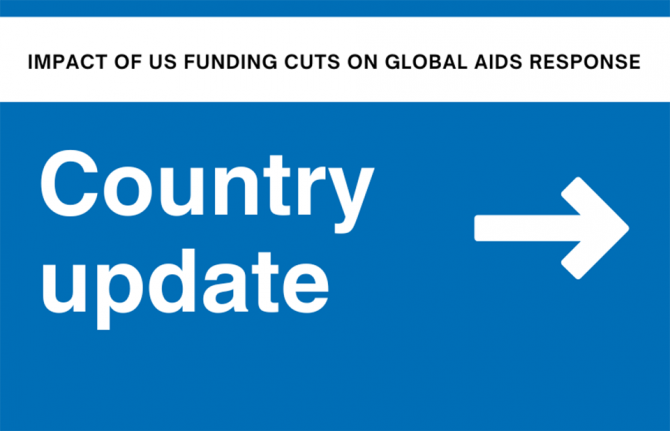 Impact of US funding cuts on HIV programmes in Ghana
Impact of US funding cuts on HIV programmes in Ghana

08 April 2025

Feature Story
Does it work for women?
02 July 2007
02 July 2007 02 July 2007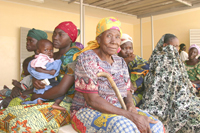
In the run-up to the International Women's Summit on Women's Leadership on AIDS, the Global Coalition of Women and AIDS's (GCWA) leadership council convenes its third meeting in Nairobi on 3rd July 2007 to examine evidence of what is happening at country level for women and AIDS.
The GCWA leadership council is made up of AIDS activists with a wide range of personal experience and professional expertise from 25 countries around the world. Advocates for the need to develop and implement AIDS programmes specially tailored to respond to the needs and challenges faced by women all over the world, the leadership council memebers will exchange information and experience on strategies that are working for women and areas where increased action is needed. The meeting will also lay out a vision for the GCWA as it moves forward.
The UNAIDS-led Global Coalition on Women and AIDS was established in 2004 to respond to the increasing feminization of the AIDS epidemic and a growing concern that existing AIDS strategies did not adequately address women’s needs.
Links:
More on the Global Coalition on Women and AIDS
Photo story: GCWA meeting
Does it work for women?
Related

Feature Story
Changing lives, changing communities: International Women's Summit, Kenya 2007
02 July 2007
02 July 2007 02 July 2007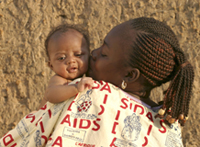
Hosted by the World YWCA, the International Women’s Summit on Women’s Leadership on HIV, brings together over 1500 people, including global leaders, high level policy makers, celebrities, community health workers and AIDS activists from 4 to 7 July to develop strategies, skills and partnerships in response to the impact of AIDS on women and girls.
This first ever International Summit of its kind addresses the impact of AIDS on women and girls, explores issues such as poverty, violence against women, children’s rights and access to decision-making and resources.
The event is organized by the World YWCA and co-convened with the International Community of Women Living with HIV, and has the support of the UNAIDS Global Coalition on Women and AIDS and the United Nations Population Fund (UNFPA).
The summit aims at:
- highlighting the difference women’s leadership is making on AIDS issues
- building the capacity of individuals and organizations to develop sustainable programmes and evidence based solutions
- mobilizing women around the world to respond to AIDS and related issues
- developing strategic partnerships to broaden the impact of AIDS responses
Related documents:
Speech by Dr Piot, UNAIDS Executive Director
Read speech by UNAIDS Deputy Executive Director at the closing ceremony
Press release by World YWCA
Photo story: Mgabathi district hospital
Changing lives, changing communities: Internation
Related

Feature Story
Call to intensify HIV prevention
02 July 2007
02 July 2007 02 July 2007
In a new report released on HIV prevention, AIDS
experts estimate that expanded HIV prevention
could avert 30 million HIV infections by 2015.
Credit: UNAIDS
AIDS experts estimate expanded HIV prevention could avert 30 million HIV infections by 2015.
In a new report released on HIV prevention, a panel of leading AIDS experts calls for a major increase in global HIV prevention programs, citing new projections that expanded access to prevention could avert approximately 30 million of the 60 million HIV infections expected to occur by 2015.
The report, released by the Global HIV Prevention Working Group, warns that HIV prevention efforts are not keeping pace with the gains being made in treating people infected with HIV. For every person who began antiretroviral therapy in 2006, the report says, six people were newly infected.
“We need to make the same gains in HIV prevention that we are making in HIV treatment,” said Helene Gayle, President and CEO of CARE USA and co-chair of the Working Group. “We have a critical window of opportunity over the next 10 years to dramatically slow the rate of new infections, and ultimately reverse the epidemic.”
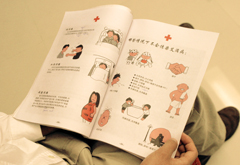
For every person who began antiretroviral therapy
in 2006, the report says, six people were newly
infected. Credit: UNAIDS
“It’s widely assumed that HIV continues to spread because prevention isn’t effective, and that’s simply not true. The problem is that effective prevention isn’t reaching the people who need it,” said David Serwadda, Director of the Institute of Public Health at Makerere University in Uganda, and co-chair of the Working Group.
The report, titled Bringing HIV Prevention to Scale: An Urgent Global Priority, finds that scientifically proven HIV prevention programs – such as those to reduce the risk of mother-to-child HIV transmission – are not being implemented on a sufficient scale, meaning they do not reach enough people, with enough intensity, to curb the epidemic. The report recommends that global spending on AIDS double over the next three years, and calls on governments and donors to ensure that resources are spent on proven prevention strategies targeted to people at highest risk.
Better allocation of resources
Although annual global spending on AIDS has increased six-fold since 2001, it is still only half of what UNAIDS recommends is needed. The Working Group calls for global AIDS spending to double within three years, from the current level of US$10 billion annually to the UNAIDS target of $22 billion by 2010, and for approximately half of this spending to be allocated for prevention, as UNAIDS recommends.
“Over the past few years there have been major increases in funding for AIDS, but we are still well short of what is needed,” said Nicholas Hellmann, interim Director of the HIV and TB programs at the Gates Foundation and a member of the Working Group. “Increasing spending now will save both lives and money over the long term.”
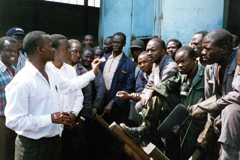
HIV prevention programs need to be designed for
people at highest risk of HIV infection.
Credit: UNAIDS
The report notes that as AIDS spending increases, it is critical for governments and international donors to ensure resources are used strategically. For example, a number of countries focus prevention efforts on general HIV awareness campaigns even though the vast majority of new infections in those countries are occurring among specific high-risk groups such as men who have sex with men and commercial sex workers. Donors should also remove any politically-based funding restrictions that limit access to scientifically proven and evidence informed HIV prevention strategies.
“Knowing the dynamics of your own HIV epidemic, and how the last 1000 infections have been transmitted, is key to tailoring HIV prevention strategies to really benefit those most in need,” said Catherine Hankins, UNAIDS Chief Scientific Advisor and Steering Committee member of the Working Group.
The Working Group is an international panel of more than 50 leading public health experts, clinicians, researchers, and people living with HIV. It is co-convened by the Henry J. Kaiser Family Foundation and the Bill & Melinda Gates Foundation.
Links:
Download the full report of the Global HIV Prevention Working Group
More information on the Working Group
More on HIV prevention

Feature Story
Brazil shares best AIDS practice with parliamentarians
29 June 2007
29 June 2007 29 June 2007International politicians seeking guidance on how to better prevent and treat HIV joined community health workers in Brazil as they made their house calls.
As part of the activities of the newly-set up Inter-Parliamentary (IPU) advisory group on HIV/ AIDS, parliamentarians from India, Uganda, South Africa and Sweden chose to visit Brazil for their first field trip, given the country’s reputation for best practice on AIDS issues. Access to free health care is written into Brazil’s constitution and the energetic, multisectoral AIDS response has made a real impact on the epidemic.
By not focusing specifically on HIV the health workers create an atmosphere of confidentiality and understanding.
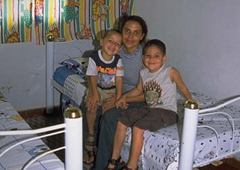
By not focusing specifically on HIV the health
workers created an atmosphere of confidentiality
and understanding.
In Sao Paulo, community health teams learn how to introduce the subjects of contraception and HIV prevention as part of general discussions on health. They then make regular door-to-door visits in low income neighbourhoods.
“What impressed me about the Brazilian approach is ensuring that universal access to free health care is enshrined in their constitution, Being able to provide the same standards of care to all citizens irrespective of their status in society is something to emulate,” said Dr Elidoa Tumwesigye,” head of Uganda’s Parliamentary Committee on HIV/AIDS.
“Everyone was impressed. By not focusing specifically on HIV the healthworkers created an atmosphere of confidentiality and understanding - this made it easier for people to come forward and seek further information about their HIV status,” said James Jennings of the IPU.
The visit was organised by the Brazilian Congress International Advisory, supported by the Brazilian National AIDS Programme, UNAIDS and UNDP. The IPU group also met the Minister of Health Jose Gomes Temporao and attended a special debate organised by the parliamentary committee on social welfare and the family.
“This mission happens in a strategic moment, in which all efforts are intensifying to guarantee the universal access to HIV prevention, treatment, care and support 2010. The participation of legislators is essential and Brazil has an important experience to share on this theme” said Luiz Loures, UNAIDS Associate Director for Global Initiatives.
In Brazil, 50 Parliamentarians from across the political divide have formed the “Parliamentary Front for Health.” They work together to ensure AIDS is kept high on the political agenda and to break down prejudice and stigma.
Legislators in the AIDS response
The global objective of the Inter-Parliamentary Union (IPU) advisory group on HIV/AIDS is to learn how different legislatures approach the subject of HIV. Politicians within the group aim to learn from each other’s experience in different contexts and settings.
“In some countries it’s not even acceptable to talk about it. You can’t legislate about something if you can’t even discuss it,” Mr Jennings pointed out.
Politicians within the Inter-Parliamentary Union advisory group on HIV/AIDS aim to learn from each other’s experience in different contexts and settings.
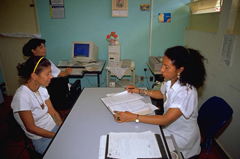
Politicians within the Inter-Parliamentary Union
advisory group on HIV/AIDS aim to learn from each
other’s experience in different contexts and settings.
Marco Aurélio da Silva from the National Network of People living with HIV/AIDS (RNP+ Brazil) called on parliamentarians to increase their active participation in the AIDS response.
“The inclusion of legislators in AIDS debates and their participation is very welcome. This partnership is extremely important”.
For example, he said that most people living with HIV were on social security. “We need the intervention of legislators in order to guarantee our ability to remain at work”.
A new edition of a handbook on HIV for legislators will be launched at the first IPU Global Parliamentary Conference on HIV to be held in Manila in November, just before World AIDS Day.
“The full engagement of parliaments in their respective countries is crucial to ensure the appropriate responses to AIDS and secure the necessary resources to support them”, said Eduardo Barbosa, Deputy Director of the National AIDS Programme in Brazil, who was actively involved in the organization of the Brazilian IPU visit.
Links:
More information on Brazil

Feature Story
Planting trees for AIDS in China
27 June 2007
27 June 2007 27 June 2007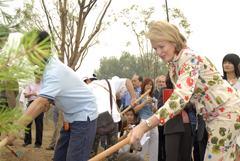
UNAIDS and UNICEF Special Representative Her
Royal Highness Princess Mathilde of Belgium
joined the symbolic tree planting event led by
organisations of people living with HIV in China.
Two issues of global importance, AIDS and the environment, were highlighted during a symbolic tree planting event led by organisations of people living with HIV in China.
The event, organized by the Beijing Health Bureau in collaboration with local HIV advocacy groups, the Mangrove Support Group and Ark of Love organization, forms part of a year-long initiative to greater involve people living with HIV in important public events, highlighting their contribution to Chinese society and in particular to the city of Beijing prior to its hosting of the 2008 Olympic Games.
"With more publicity about AIDS, more and more people living with HIV are facing up to the reality and taking active steps to have a fulfilling life in society," said Meng Lin, the founder of the "Ark of Love" organization.
Under the title “ Olympics with you and me", Mangrove Support Group first started the tree planting project in 2006 by leasing the land near the Olympic construction site and arranging a number of trips to this area for people living with HIV and various organizations involved in the AIDS response. During these events, trees are planted and watered and small personal name plates are tied to the trees.
The project activities not only provide an opportunity for people living with HIV to help make Beijing greener but also aim to reduce AIDS-related stigma and discrimination.
UNAIDS and UNICEF Special Representatives HRH Princess Mathilde of Belgium and Serge Dumont, Senior Vice President of the Omnicom Group also joined the awareness raising initiative.

Her Royal Highness Princess Mathilde of Belgium
talks with Ms. Guan Baoying, Deputy Director,
Disease Control Division, Beijing Health Bureau
(middle) and a member of a local HIV advocacy
group during the tree planting event .
In her speech at the event, Her Royal Highness Princess Mathilde stressed the importance of acceptance and inclusion of people living with HIV in Chinese society. “The universal values of the Olympic spirit -- Unity, Friendship, Progress, Harmony, Participation and Dream—are the very values that should guide us in all our contacts with others, whatever their age, sex, ethnic origin or HIV-status,” she said.
Applauding the tree-planting initiative, Her Royal Highness Princess Mathilde underlined: “You are showing us the way, working together to make Beijing greener for the well-being of all.”
Also participating in the event were Ms. Jiang Yiman, Executive Vice President of China Red Cross, Ms. Deng Yaping, Red Cross Goodwill Ambassador, table tennis player and winner of six world championships and four Olympic gold medals, as well as Dr. Mukesh Kapila, Special Representative on HIV of International Federation of Red Cross and Red Crescent Societies, and leaders from the United Nations, Ministry of Health, the Chinese Olympic Committee and the Global Business Coalition on AIDS, TB and Malaria.
In China an e stimated 650,000 people are living with HIV. Approximately 30,000 people living with HIV currently receive anti-retroviral treatment.
Links:
Read more on China
Read more on UNAIDS Special Representatives

Feature Story
Implementers' meeting
27 June 2007
27 June 2007 27 June 2007Representatives from over 50 countries came together in Kigali on 16 June for the opening session of the HIV/AIDS Implementer’s Meeting hosted by the government of Rwanda and cosponsored by PEPFAR, the Global Fund to Fight AIDS, Tuberculosis and Malaria; the UNAIDS Secretariat, UNICEF, WHO and the World Bank .
The theme of this year’s meeting, “Scaling Up Through Partnerships,” recognizes the rapid expansion of HIV/AIDS programs worldwide. Together, implementers will exchange lessons learned on building the capacity of local prevention, treatment, and care programs, maintaining quality control, and coordinating efforts. This forum will facilitate an open dialogue about future directions of HIV/AIDS programs, with a strong emphasis on implementation and identification of critical barriers and best practices.
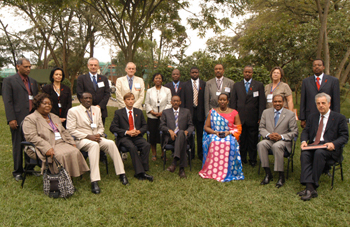 |
Donors, AIDS experts and implementers from around the world gathered in Kigali, Rwanda to attend the 2007 HIV/AIDS Implementers’ Meeting. The meeting was hosted by the government of Rwanda and cosponsored by PEPFAR, the Global Fund to Fight AIDS, Tuberculosis and Malaria; the UNAIDS Secretariat, UNICEF, WHO and the World Bank. |
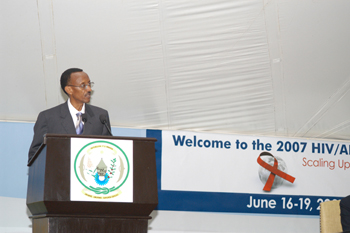 |
In his opening key note address, His Excellency the President of the Republic of Rwanda, listed the achievements to date and elaborated on the drivers of progress. He also insisted on making a breakthrough in strengthening health systems by joining forces with development partners to build capacity. |
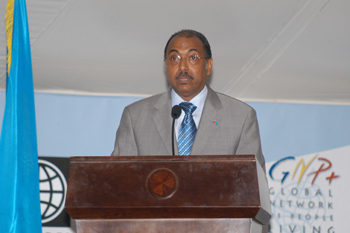 |
Michel Sidibe, UNAIDS Deputy Executive Director delivered a speech on behalf of Dr. Peter Piot, UNAIDS Executive Director, highlighting 5 key strategic areas: Spending money on programmes and priorities owned by communities who understand their epidemics; Enhancing capacity in education and social services and making use of communities and civil society as invaluable resources; Shifting from short term interventions to more strategic long term approaches; Putting AIDS at the core of any development programme; and scaling-up for greater efficiency in delivering results without loosing money on the way. |
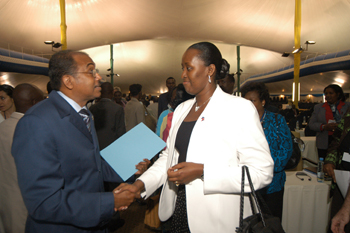 |
Michel Sidibe, UNAIDS Deputy Executive Director talks to the First Lady of Rwanda Jeannette Kagame during the 2007 HIV/AIDS implementers meeting. |
 |
UNAIDS Special Representative Mary Fisher during her speech at the 2007 HIV/AIDS implementers' meeting. |
Related
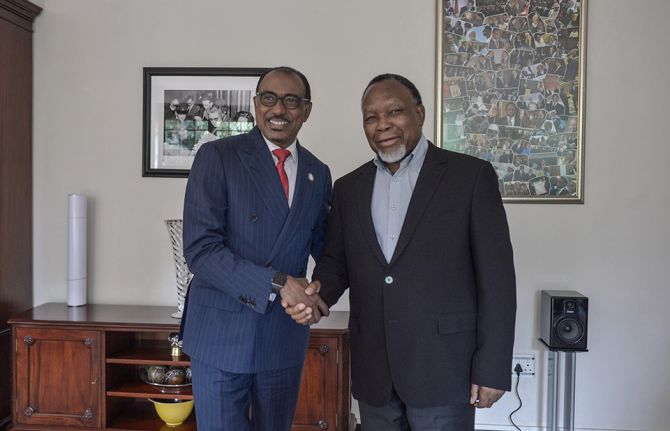 Keeping up the momentum in the global AIDS response
Keeping up the momentum in the global AIDS response

24 April 2019
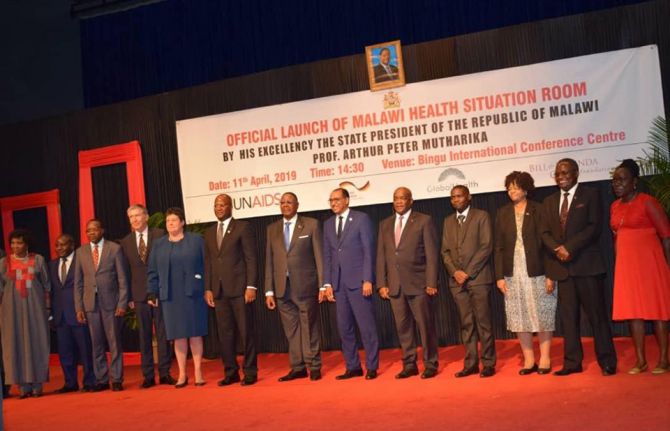 Malawi launches its health situation room
Malawi launches its health situation room

12 April 2019
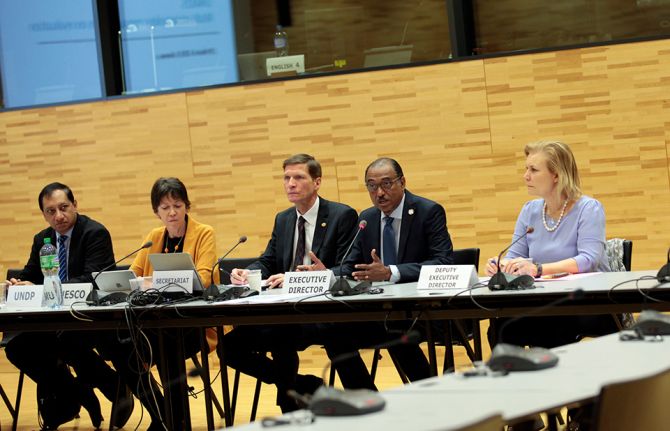 Learning lessons on evaluation
Learning lessons on evaluation

02 April 2019

Feature Story
India: Driving forward an effective AIDS response
22 June 2007
22 June 2007 22 June 2007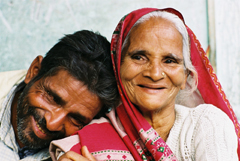
The new national plan was developed through a
highly inclusive participatory process, including a
wide array of Indian non-governmental
organizations as well as community based groups.
“India has a prime opportunity to drive its AIDS response forward and get ahead of its epidemic,” said UNAIDS Deputy Executive Director, Michel Sidibe, commenting on the successful development of the country’s National AIDS Control Plan III. Currently waiting final sign off from the Indian Ministry of Health, the plan is widely recognized by national stakeholders and international development partners as being the ‘best’ national AIDS strategic plan that India has had.
“With the new plan, India has the potential to set an example for the rest of the world,” Sidibe said during a mission to the country to take stock of UNAIDS work in the country and to identify a strategy for UNAIDS, towards supporting the government, national stakeholders and development partners achieve the goals of the national plan.
With particular focus on scaling up investment on prevention activities among high risk populations, and increasing antiretroviral treatment coverage, the plan emphasizes critical involvement of community based organizations and institutions both in public and private sectors as key to its success. Creation of appropriate mechanisms and capacities at national, state and district levels to implement and monitor the interventions are also central to the plan.
With a budget of $US 2.5 billion for the next five years, the new national plan was developed through a highly inclusive participatory process, including a wide array of Indian non-governmental organizations as well as community based groups. The importance of state level action and a decentralized AIDS response is also a critical element of the plan.
“It is crucial now that all partners sustain this positive energy and momentum in the period of implementing the plan,” said Sidibe, underlining that UNAIDS would work hard to sustain commitment to action on AIDS in India, and to support implementation further through the provision of high quality, timely strategic information to all stakeholders in India.
Links:
Read more on India

Feature Story
What about the Children?
21 June 2007
21 June 2007 21 June 2007A panel chaired by UNICEF’s Director of Programmes Alan Court discussed the missing faces of children in planning AIDS treatment programmes.
Three years ago, it was difficult to find data on children and HIV. There were several reasons for this, namely denial, stigma, many mothers’ fears of disclosing their HIV status, lack of support from fathers, and medical staff showing little concern for the welfare of the children.
From 2003, as the missing face of children became a rallying point for advocacy, research was conducted which confirmed that children had been hit hard by the AIDS epidemic and were receiving little support.
Countries such as Rwanda have shown tremendous political commitment to support children affected by the AIDS epidemic. Community mobilisation efforts to ensure that mothers are aware of and have access to the services available for children are paying off. However, fathers remain the missing link. The panellists agreed that the pressures to protect children weigh heavily on mothers. The father is often absent and, in many cases women receive such little support from their husbands that they fear disclosing their status.
This point was brought home by the testimony of a young HIV positive mother, who said she had been a virgin up to the time she married but found herself infected and widowed just fourteen months into her marriage. She said that had it not been for the HIV support group, she wouldn’t have been able to cope.
She said that disclosing one’s HIV status was an important step to ensuring that both adults and children get access to much needed support. Preserving and strengthening family ties for families affected by AIDS can go a long way to helping ensure that children are properly cared for by their parents. The session called upon all implementers to ensure the needs of children are prominent in all HIV programming and interventions.
Links:
More on the implementers' meeting
Related

Feature Story
TB/HIV - Interlinking epidemics
21 June 2007
21 June 2007 21 June 2007With HIV-related tuberculosis (TB) cases increasing in many parts of Africa, Dr Chakaya Muhwa highlighted the work of the Kenyan government to establish clear policy guidelines and effective organizational structures. These have come at a time when TB is emerging as a serious public health problem in Kenya, compounded by the appearance of drug-resistant TB strains that are making the disease that much more difficult and expensive to treat.
In his presentation, “TB/HIV: Integration of Services and Stopping the Newest Epidemic” Dr Chakaya said TB and HIV programmes should work together because the link between the two diseases was clear. He emphasised the importance of treating all illnesses associated with HIV and the need to improve health care systems. He also flagged the need to base human resource needs on staffing norms, not on workload assessment. He also stressed the need to recognise best practice in adequately controlling HIV and TB infections. “Inadequate infection control practices encourage the transmission of HIV and TB,” he said. TB control programmes needed to be strengthened and better coordinated with HIV programmes.
Links:
More on the implementers' meeting

